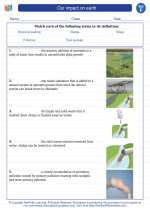Waves
Waves are a fundamental concept in physics and can be found in various forms in our everyday lives. They are a way in which energy is transferred from one place to another without the transfer of matter. There are different types of waves, including mechanical waves, electromagnetic waves, and matter waves. Waves can be characterized by their wavelength, frequency, amplitude, and speed.
Types of Waves
1. Mechanical Waves: These waves require a medium, such as air or water, to travel through. Examples include sound waves and water waves.
2. Electromagnetic Waves: These waves can travel through a vacuum and do not require a medium. Examples include light waves, radio waves, and X-rays.
3. Matter Waves: These waves are associated with the motion of particles at the atomic and subatomic levels, according to the principles of quantum mechanics.
Characteristics of Waves
1. Wavelength: The distance between two successive points on a wave that are in phase, such as two crests or two troughs.
2. Frequency: The number of complete waves that pass a certain point in a given time, typically measured in hertz (Hz).
3. Amplitude: The maximum displacement of a wave from its equilibrium position. For light waves, amplitude is related to the intensity of the light.
4. Speed: The rate at which a wave travels through a medium, which is determined by the medium's properties.
Study Guide
When studying waves, it is important to understand the different types of waves and their characteristics. Additionally, it is helpful to grasp the relationships between wavelength, frequency, and speed, which can be summarized by the equation:
speed = frequency × wavelength
It is also beneficial to explore real-life examples of waves, such as the behavior of sound waves in different mediums or the properties of light waves in the electromagnetic spectrum. Understanding wave behaviors, such as reflection, refraction, diffraction, and interference, can provide insights into various natural phenomena.
Lastly, practicing problems related to wave properties and calculations can reinforce understanding and application of wave concepts.
[Waves] Related Worksheets and Study Guides:
.◂Science Worksheets and Study Guides Sixth Grade. Our impact on earth
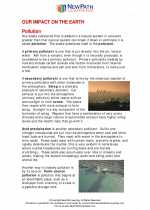
 Worksheet/Answer key
Worksheet/Answer key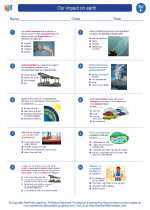
 Worksheet/Answer key
Worksheet/Answer key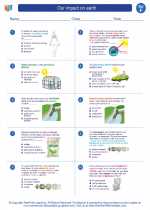
 Worksheet/Answer key
Worksheet/Answer key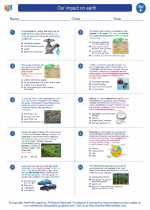
 Vocabulary/Answer key
Vocabulary/Answer key